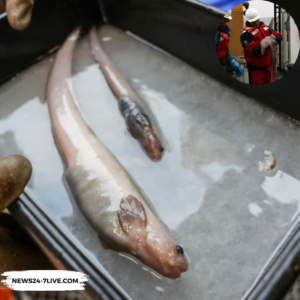A team of 21 scientists, a wealth of marine biodiversity has been unveiled in the largely unexplored Bounty Trough off the coast of New Zealand’s South Island. 100 new species, with richness of New Zealand’s marine ecosystems.

Also Read: Odysseus Completes First US Moon Landing Since 1972
Led by marine biologist Dr. Alex Rogers, the team’s estimate could soon be eclipsed as further samples are analyzed.
The discovery of approximately 100 new marine species, with expectations of this number growing as further analysis is conducted.
Led by marine biologist Alex Rogers, the team went on this journey with the goal of uncovering the mysteries of the ocean’s depths.
Among the newly discovered species are dozens of mollusks, three fish, a shrimp, and a cephalopod. Researchers encountered a star-shaped animal, about a centimeter across, which has yet to be identified but is speculated to be a type of coral.
With only 10% of ocean life currently known to us, the importance of understanding and conserving marine ecosystems cannot be overstated.
Marine life plays a role in supporting life on Earth, from providing food for billions to regulating climate and storing carbon.
The expedition was part of the Ocean Census initiative, a nonprofit organization dedicated to the global discovery of ocean life.
Founded by The Nippon Foundation and the UK-based Nekton foundation, Ocean Census plans to accelerate the discovery and protection of marine life worldwide.
Scientists from various institutions, including the National Institute of Water and Atmospheric Research (NIWA) and the Museum of New Zealand Te Papa Tongarewa, collaborated on this expedition.
Also Read: Neuralink’s First Human Patient able to Control Mouse through Thinking
With only 10% of ocean life currently known to science, the urgency to protect these precious ecosystems has never been greater.
Dr. Rogers addressed the critical role of marine ecosystems in supporting life on Earth, from sustaining billions through food production to regulating our climate.
By comprehending the distribution and abundance of marine life, we can better manage human activities to halt further decline.
This discovery was the culmination of the Ocean Census expedition, a collaborative effort involving the Ocean Census non-profit organization, the National Institute of Water and Atmospheric Research (NIWA), and the Museum of New Zealand Te Papa Tongarewa.
Their goal is to illuminate the hidden corners of the ocean. The team utilized imaging systems and sampling devices to uncover the secrets hidden beneath the waves.
From baited nets to the innovative Brenke sled, capable of capturing lifeforms dwelling close to the seabed, no stone was left unturned in their quest for knowledge.
The Bounty Trough extending for 800 kilometers off the eastern coast of New Zealand, represents a largely unexplored region of the ocean.
Following the expedition scientists are engaged in taxonomic workshops to confirm the findings and classify the newly discovered species. This process ensures that accurate data is added to our understanding of marine biodiversity.
The specimens collected during the expedition will be housed in research institutions, such as the NIWA Invertebrate Collection and the National Museum of New Zealand Te Papa Tongarewa.
Also Read: Intuitive Machines Launches First Private US Moon Lander























